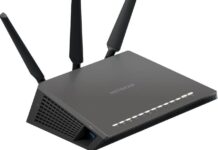So you’ve finally put together a great remote team! Whether it’s a new project or just a work-from-home switch you had to make due to the pandemic, it won’t take you long to see some of the nice aspects of remote work.
From the employees’ perspective, remote work might lead to a bit more freedom when it comes to how to dress and where to eat. And the only commute time they’ll have to worry about is how long it takes to get from the couch to the desk.

And the remote aspect might be freeing for employers and supervisors as well. Many people find that working from home leads people to manage themselves in new ways.
In order to make sure your remote work journey starts off without a hitch, it’s important to avoid any delays or misunderstandings about the paychecks. Use these tips to become a pro at payroll for remote employees.
Employee vs. Independent Contractor
Before you get started figuring out your company’s taxes, you should check to make sure your remote employees are indeed functioning as employees and not independent contractors. This might seem like a small difference in day-to-day work, but it makes a difference in how you do your taxes.
If the people working on your team are employees, the company is responsible for withholding taxes from the workers’ paychecks according to their state. If they’re independent contractors, though, they should be responsible for paying their own taxes out of a full paycheck.
The Workers’ Side of Things
Take a moment to consider how your employees will understand the ins and outs of the new remote work organization. Things might make sense in your mind, but it’s your responsibility to make sure each worker is aware of where each dollar in their paycheck came from or went to. This is especially important if you’re working with tax laws from multiple states.
You can make this whole process easier by learning how to create a pay stub for remote employees. Get into the habit of sending a stay stub along with every paycheck. This way, you can keep everyone up to date on any changes in salary or taxes.
Direct Deposit Payroll for Remote Employees
When it comes to actually delivering the paycheck to your remote workers, you have the choice of whether to use a physical check or direct deposit. If you use a physical check, you’ll likely have to mail it for remote work.
For long-distance teams, direct deposit is usually an easier option. You’ll just have to get your employees’ permission first. Once they agree to the direct deposit method, you can start sending them their paychecks in a quick and straightforward way—no more worrying whether an envelope got lost in the mail!
Get Started on Something New!
Remote work is an excellent employment option that people are exploring more and more as the stay-at-home measures continue. And you might find that workers are much more open to changes when they feel secure about their regular payments. So use the information from this guide to figure out the payroll for remote employees and get to work.
And if you’d like to learn more about how everyday people are making it through this interesting time, check out the other articles on our site!



































